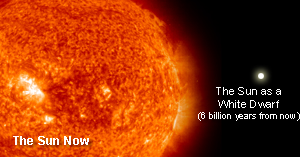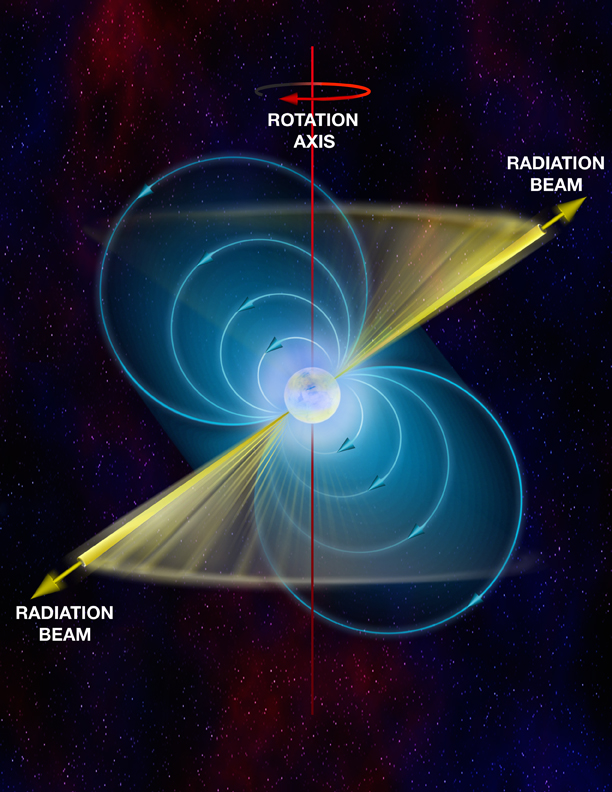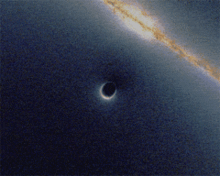What are different ends to a star's life?
1 Answer
It all depends on how big the star is.
Explanation:
The larger the star the shorter the life span. This is due to convective currents. In a small star convective currents allow helium to disperse and not accumulate at the core. This results in more complete fusion giving the star a life span longer than the age of the universe. As such for small stars (red dwarfs) we don't know exactly what will happen. It is possible that they just cool off.
Slightly larger stars like our sun will eventually explode and then compact. When they compact there will be no space between electrons and protons. This super compact star is called a white dwarf. It is white because it is super hot, which is odd because it is no longer creating heat. As it cools over billions (maybe a trillion) years it is theorized that it will eventually lose all heat and turn into a black dwarf. This image shows how much the sun will compact when it turns to a white dwarf.


Stars that are at least 8 times bigger than our sun up to about 30 times bigger than our sun will turn into neutron stars. A neutron star is even more dense than a white dwarf because not only is there no space between the sub atomic particles but protons and electrons begin to fuse together forming neutrons. The smallest neutron star is around 50 miles across but has twice the mass of our sun.
Like other celestial bodies, stars spin. When a neutron star forms, due to the conservation of angular momentum it will increase the speed of its spin. This is like a figure skater doing a spin and then pulling her arms in. She speeds up but there is no change in force. In the case of a neutron star, this increase in speed can be so great that the star can rotate at speeds of several revolutions per second. This generates energy that due to magnetic field will produce a burst of energy coming from the poles. If the angle of the rotation is such that the beam sweeps across the solar system, like an airport beacon, it can appear like the star is actually pulsing. This is a pulsar, and it looks like this.


Finally if a star is too big to be a neutron star it will compact even more, to the point that the center of it will reach a density approaching infinity. At this point any matter that gets close enough will get sucked in too. The neutrons all fuse together so that you get a single point (called a singularity) and the gravity is so high not even light can escape. This is a black hole. Since light can't escape we cannot sense then except when a body passes behind the black hole so that the hole will distort what we see. This is called gravitational lensing.


